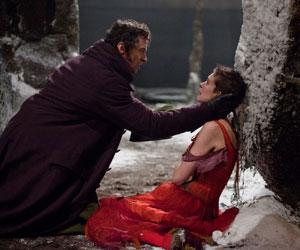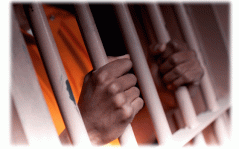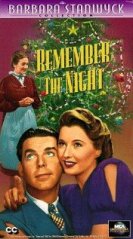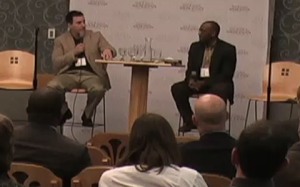 Everybody has been so worked up over the Duck Dynasty/Phil Robertson controversy (and, before that, Megyn Kelly’s “white Santa” drama) that it feels like we’ve misplaced our “peace on earth and good will toward men.” I really appreciate Jen Hatmaker’s wise and passionate words on the subject, but frankly I’d prefer not to add any more volume to the cacophony. Instead, I’ve come out of blogging hibernation to offer my reflections on something a little more fitting for the season. A couple days ago, I heard an engaging segment on NPR about sad Christmas songs.
Everybody has been so worked up over the Duck Dynasty/Phil Robertson controversy (and, before that, Megyn Kelly’s “white Santa” drama) that it feels like we’ve misplaced our “peace on earth and good will toward men.” I really appreciate Jen Hatmaker’s wise and passionate words on the subject, but frankly I’d prefer not to add any more volume to the cacophony. Instead, I’ve come out of blogging hibernation to offer my reflections on something a little more fitting for the season. A couple days ago, I heard an engaging segment on NPR about sad Christmas songs.
“Bundled up in Christmas is hopefully a lot of joy and a lot of family and a lot of happiness, but that’s always going to be touched with an element of sadness,” said NPR’s Stephen Thompson, and I agree. Whether it’s Nat King Cole’s classic “The Christmas Song” or Vince Guaraldi’s “Christmastime Is Here,” our favorite holiday tunes usually come with a dash of melancholy. It’s what I used to refer to during my teen years as a “happy sadness.”
Every Christmas I have at least one or two songs that wind up defining the holiday for me that year. The last couple of years, the tracks from Vince Guaraldi’s A Charlie Brown Christmas comprised my go-to holiday playlist. But this year, I can’t seem to get away from the funky “Santa Claus Go Straight to the Ghetto” by James Brown. The tune has been in heavy rotation on my iPod for the past couple weeks.
As a child of the 1970s and ’80s, I was a bit too young to witness James Brown in his original glory. My initial impressions of him were informed more by the mild spoofs of himself that he did in The Blues Brothers or Rocky IV. While those performances were genuine James Brown, they were more riffs on his former greatness than fresh manifestations of his true artistic brilliance. James Brown is remembered as “the Godfather of Soul,” “Soul Brother No. 1,” and “the Hardest Working Man in Show Business.” Signature James Brown hits like “I Feel Good” and “Papa’s Got a Brand New Bag” are not just great R&B songs; they’re among the greatest entries in the American songbook. It’s not hyperbole to say James Brown was one of the most influential artists in popular music. Without him, it’s difficult to imagine how any of today’s variations of pop music—rock, R&B, hip-hop—would exist in their fullness.
“Santa Claus Go Straight to the Ghetto” was released in 1968 as part of Brown’s A Soulful Christmas album. When I first heard the song a few years ago, I confess that I listened to it through the filter of the latter-day James Brown caricature. It’s the funky Godfather of Soul talking about Santa Claus going to the ghetto. That’s pure fun and silliness, right? Upon further listens, however, I was struck by how urgent the song is. Not only is it filled with an understated poignancy, at moments it virtually seethes with a biting desperation. This, after all, was 1968—the year that saw Brown moving from being one of America’s most popular entertainers to one of its most vocal activists.
Most notably, 1968 was the year that Martin Luther King Jr. was assassinated on a motel balcony in Memphis. All at once, the anger and hopelessness of black people boiled over in the form of riots across American cities. As the nation both figuratively and literally burned, James Brown was called upon to help bring peace to a tenuous situation. On April 5, 1968, the day after King’s murder, Brown had been scheduled to perform a concert at the Boston Garden. In the wake of the Memphis tragedy, however, the performance was initially canceled by Boston Garden management until Boston’s first African American city councilman, Tom Atkins, persuaded Boston mayor Kevin White that the James Brown concert should go on and be televised on local public television as a means of unifying the black community and directing its attention away from the despondency and rage that were hanging in the air. James Brown not only supplied a thrilling performance, he was credited with calming the city’s nerves and keeping Boston residents safely away from the troubled streets.
The full story is chronicled wonderfully in James Sullivan’s book The Hardest Working Man: How James Brown Saved the Soul of America. Indeed, the Boston concert marked something of a turning point in Brown’s career. After that show, President Lyndon Johnson implored the singer to perform a benefit concert in Washington, D.C., to promote a message of nonviolence. And later in the year, Brown would release his groundbreaking hit “Say It Loud—I’m Black and I’m Proud,” which placed him squarely in the fray of the civil rights movement’s struggle for racial justice in America.
It’s against this backdrop that Brown recorded “Santa Claus Go Straight to the Ghetto.” And once you get past the initial funkiness of the track (check out the quick burst of “Jingle Bells” during the saxophone solo), it’s hard not to hear it as a type of subversive protest song.
Santa Claus, go straight to the ghetto
Hitch up your reindeer, uh!
And go straight to the ghetto
Santa Claus, go straight to the ghetto
Fill every stocking you find
The kids are gonna love you so, uh!
What’s most striking about the song to me is how Brown acts as the tour guide for Santa, the one man whom you’d suppose knew his way around all parts of the world. But in 1968, Brown understood that Santa Claus, and all he might represent in this context—the government? the church? white America?—needed instructions for navigating their way around the ghetto, a place that was presumably foreign to them.
Leave a toy for Johnny
Leave a doll for Mary
Leave something pretty for Donnie
And don’t forget about Gary
“Tell ’em James Brown sent you,” the singer goes on to say, at once offering himself up as the conduit for connecting with the hidden pain of the black community.
I confess, “Santa Claus Go Straight to the Ghetto” is an odd candidate for the Christmas canon. It does not receive the acclaim of R&B holiday classics such as Donny Hathaway’s “This Christmas” or the Temptations’ rendition of “Silent Night.” It will never be sung by neighborhood carolers or during a church Christmas Eve service. But 45 years after the song’s release, in a 21st-century era that still boasts disturbing social and economic disparities between rich and poor, black and white, immigrant and non-immigrant, it might do us well to take Soul Brother No. 1’s desperate plea to heart. Could it be that he’s calling us to pack up our sleighs and remember the contemporary “ghettos” in our midst?


 WBEZ, the local public radio station here in Chicago, has been doing
WBEZ, the local public radio station here in Chicago, has been doing  Hello friends. It’s been almost two years since I last posted here. Inexcusable, I know. But now that my gig as the editor of
Hello friends. It’s been almost two years since I last posted here. Inexcusable, I know. But now that my gig as the editor of 
